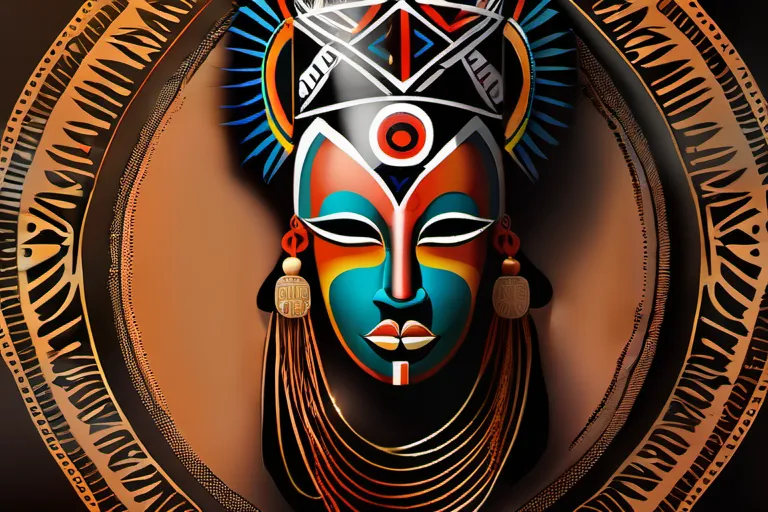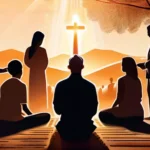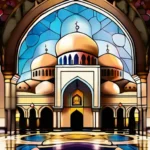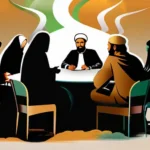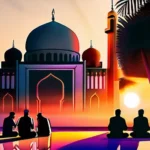Exploring the unique beliefs, practices, and cultural significance of Vodun religion within the context of religious thought.
Vodun, also known as Voodoo, is a rich and complex religious system that originated in West Africa. This article delves into the role that Vodun plays in religious thought, examining its beliefs, practices, and cultural significance. From its origins to its modern-day manifestations, we will explore the fascinating world of Vodun.
The Origins of Vodun
Imagine peeling back the layers of time to trace the roots of Vodun religion, which originated in ancient West Africa. How did this rich tapestry of beliefs and practices come into being? Was it through the whispers of ancestors or the echoes of the divine in nature’s most profound mysteries? The origins of Vodun are steeped in the vibrant culture and mythology of regions like Benin, Nigeria, and Togo.
Picture a lush, sun-dappled savannah where people lived in harmony with their environment. The spirits of nature, known as loa or voduns, were integral to daily life. These spirits, much like the branches of a tree, extended into every aspect of society, from agriculture and medicine to social order and governance. Vodun religion was not just a set of rituals but a way of life that intertwined with the fabric of community existence.
The journey back in time reveals that Vodun’s roots are deeply connected to the transatlantic slave trade. As millions were forcibly removed from their ancestral homelands, they brought with them their spiritual practices and beliefs. In the harsh conditions of the Americas, these traditions evolved and adapted, blending with indigenous cultures to form what we now recognize as Vodun in Haiti, Brazil, and other regions.
How did this religion manage to survive such a tumultuous history? It’s akin to a river that finds new paths after facing obstacles. Vodun thrived not because it was static but because it could adapt while maintaining its core essence. This resilience is evident in the diverse expressions of Vodun across different cultures, each adding its unique flavor yet remaining fundamentally connected.
From these origins, we can see that Vodun religion isn’t just about worship; it’s a dynamic force that shapes and enriches human experience. By exploring its roots, we gain a deeper understanding of the profound impact this belief system has had on religious thought and cultural identity across the globe.
Beliefs and Practices
Imagine stepping into a world where every stone whispers stories and every tree holds secrets. In this realm, Vodun religion thrives, a vibrant tapestry woven with threads of ancient beliefs, practices, and cultural significance. How can we begin to understand this intricate web without delving into its core elements?
Firstly, let us explore the heart of Vodun: ancestor worship. Just as every family has its elders whose voices resonate through generations, in Vodun, ancestors are revered as guardians and guides, their spirits ever-present, influencing daily life. Offerings of food, drinks, and other tokens of respect are made to appease them, ensuring the continuity of familial bonds that stretch from this world into another.
Next, we find ourselves in the realm of spirit possession. This practice is not merely a ritual but a profound connection between human beings and their spiritual counterparts. When a spirit possesses an individual, it’s as if a bridge has been built, allowing these spirits to share wisdom and insights with their earthly companions. Witnessing this phenomenon can be both awe-inspiring and humbling, reminding us of the interconnectedness of all things.
Lastly, let us consider offerings. In Vodun, offerings are not just gifts but acts of devotion, reflecting the deep respect for the divine. Whether it’s a simple libation or an elaborate feast, these rituals serve as a means to communicate with the spiritual realm, seeking guidance and blessing in various aspects of life.
Through these practices, Vodun religion becomes more than just a collection of beliefs; it is a lived experience that shapes the daily lives of its practitioners. Each offering, each act of possession, and every invocation to ancestors contributes to a rich tapestry that defines the essence of this profound spiritual tradition.
The Role of Loa (Spirits)
The Role of Loa (Spirits): Explore the role of loa (spirits) in Vodun religion, understanding their importance and how they are venerated.
Imagine a vast symphony where every note and melody contributes to the overall harmony. In Vodun religion, the loa (spirits) play this crucial role. They are not mere entities but intricate characters in a complex narrative of life and spirituality. How do these loa shape the religious thought of Vodun followers?
Loa can be seen as the conductors of this symphony, each with its unique melody and rhythm. For instance, Loua Ogoun, the spirit of fire and iron, is often invoked for protection and strength in battle or labor. How do Vodun practitioners see themselves in relation to these powerful figures? Are they allies, seeking guidance, or are they warriors ready to face challenges?
The veneration of loa goes beyond mere worship; it involves a deep connection where followers believe the spirits can influence their daily lives. Through rituals and offerings, believers seek not just to please the loa but also to gain favor in return. Do these practices reveal a belief system that values interaction and relationship with the divine?
Moreover, each loa has its own distinct personality and attributes. Loua Legba, for instance, is often depicted as a trickster who can open doors and bridge worlds. How does this characterization reflect on the Vodun belief in duality and the unseen world? Can we see parallels between these spirits and the masks used in African theater, where roles are fluid and transformational?
Understanding the role of loa (spirits) in Vodun religion is to delve into a rich tapestry of beliefs that intertwine history, culture, and spirituality. These spirits act as intermediaries between humans and the divine, offering guidance, protection, and a sense of community. As we explore further, consider how these spiritual figures continue to influence modern Vodun practices and beliefs, shaping the very fabric of this vibrant religion.
Vodun in Modern Times
Vodun religion, like a vibrant tapestry, weaves through the cultural landscapes of many African and Caribbean communities. In modern times, how does Vodun continue to manifest its influence in these diverse settings? Is it just a relic of ancient traditions, or has it evolved into something that resonates deeply with contemporary society?
Consider Haiti, where Vodun is not merely a religious practice but a fundamental aspect of cultural identity. How do the rituals and beliefs of Vodun intertwine with political and social struggles? Are these practices seen as resistance against oppression or simply as a means to find solace in a challenging world?
Across the Atlantic, in Senegal and Benin, Vodun is celebrated during vibrant festivals where people come together to honor their ancestors and seek guidance from loa. These gatherings are not just social events but serve as spiritual conclaves that reinforce communal bonds. How do these modern manifestations of Vodun reflect the changing dynamics within African societies?
In diaspora communities, particularly in the United States and Europe, Vodun has adapted to new environments while maintaining its core essence. Do these adaptations represent a clash between tradition and innovation, or is it a harmonious blend that keeps the religion relevant? How do practitioners navigate the challenges of integrating their spiritual beliefs into modern lifestyles?
Moreover, in an age where globalization is blurring cultural boundaries, how does Vodun coexist with other religious practices? Are there tensions between maintaining traditional rituals and embracing new forms of spirituality? Or is it a dynamic interplay that enriches the diverse religious tapestry of our world?
The modern manifestations of Vodun religion are not just about preserving ancient practices but also about finding ways to connect with the past in a meaningful way. It is a living tradition that continues to evolve, reflecting the resilience and adaptability of its followers. In this ever-changing world, how does Vodun continue to provide a sense of identity, community, and spiritual connection?
The Cultural Significance of Vodun
Imagine a vibrant tapestry, where each thread represents a different cultural expression, and Vodun religion weaves through it like a rich, colorful pattern. In many African societies, Vodun is not just a set of rituals or beliefs; it’s an integral part of the very fabric of daily life. How does this ancient practice shape the art, music, and social structures of communities where it thrives?
Art in Vodun-rich cultures often tells stories of the loa (spirits) and their interactions with humans. These stories are not just depicted on walls or canvases but also through dances that are performed during rituals. The dahomey masks, for instance, are masterpieces that bring spirits to life, each one embodying a different aspect of the divine. These masks serve as gateways between the human and spirit worlds, guiding the living in their spiritual journeys.
Music plays an equally vital role in Vodun practices. It’s not just entertainment but a means through which spirits are invoked and communed with. The rhythmic beats and melodies of traditional drums seem to open up doorways, allowing the community to connect with their ancestral heritage. This music is often passed down from generation to generation, ensuring that cultural knowledge remains alive.
Socially, Vodun shapes the roles and responsibilities within communities. It provides a framework for understanding one’s place in the world and how they should interact with others. For example, certain loa may be associated with specific trades or family roles, fostering a sense of unity and mutual respect. This integration of spiritual practices into everyday life creates a cohesive social structure where everyone has a role to play.
Reflecting on Vodun’s cultural significance, we see how it enriches the lives of individuals and communities by providing them with a rich web of meaning and purpose. It serves as a bridge between the past and present, connecting people not only to their ancestors but also to the spiritual world that guides their existence.
Vodun and Religious Thought
Imagine Vodun religion as a vibrant river, flowing through the heart of West African culture and beyond. How does this complex system of beliefs fit into the broader landscape of religious thought? Can we draw parallels between Vodun and other religious systems, or does it stand alone in its unique structure and practice?
Vodun is often compared to Western monotheistic religions like Christianity or Islam. However, these comparisons sometimes miss the essence of Vodun’s polytheism, where multiple deities (or loa) are honored and interact with the living. Unlike the strict monotheism of some traditions, Vodun embraces a rich tapestry of spiritual beings, each with its own personality, history, and role in the world.
A key aspect of Vodun is the emphasis on rituals. These ceremonies are not just acts of worship but profound expressions of community and personal identity. Through rituals, practitioners seek to connect with their ancestors, gain protection from the loa, and find spiritual balance in their lives. How do these rituals compare to the more formalized services found in other religions? Do they offer a different path to the divine?
The role of voodoo dolls in popular culture often leads to misconceptions about Vodun. These small figures are actually used as symbolic tools, representing individuals and helping practitioners communicate with the spiritual realm. They serve as metaphors for the complex relationships between humans and the supernatural. How do these practices differ from offerings or prayers in other religions?
Vodun’s integration of nature and daily life is another unique feature. The natural world is seen not just as a backdrop but as an active participant in spiritual matters. This holistic approach to spirituality challenges our modern, often compartmentalized view of religion. How can we reconcile this with the more structured and segregated religious practices found in many societies?
Ultimately, Vodun’s role in religious thought lies in its ability to adapt and evolve within a diverse and dynamic cultural context. It bridges the gap between the spiritual and the mundane, offering a lived experience that is both deeply personal and profoundly communal. As we explore this rich tradition, we are invited to question our own preconceptions about what religion can be.
Conclusion
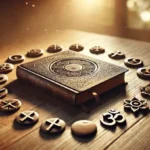 In conclusion, Vodun religion offers a unique perspective on religious thought, blending elements of animism, ancestor worship, and spirit possession. By understanding the role that Vodun plays in religious thought, we can gain valuable insights into the diversity and complexity of human spirituality.
In conclusion, Vodun religion offers a unique perspective on religious thought, blending elements of animism, ancestor worship, and spirit possession. By understanding the role that Vodun plays in religious thought, we can gain valuable insights into the diversity and complexity of human spirituality.

